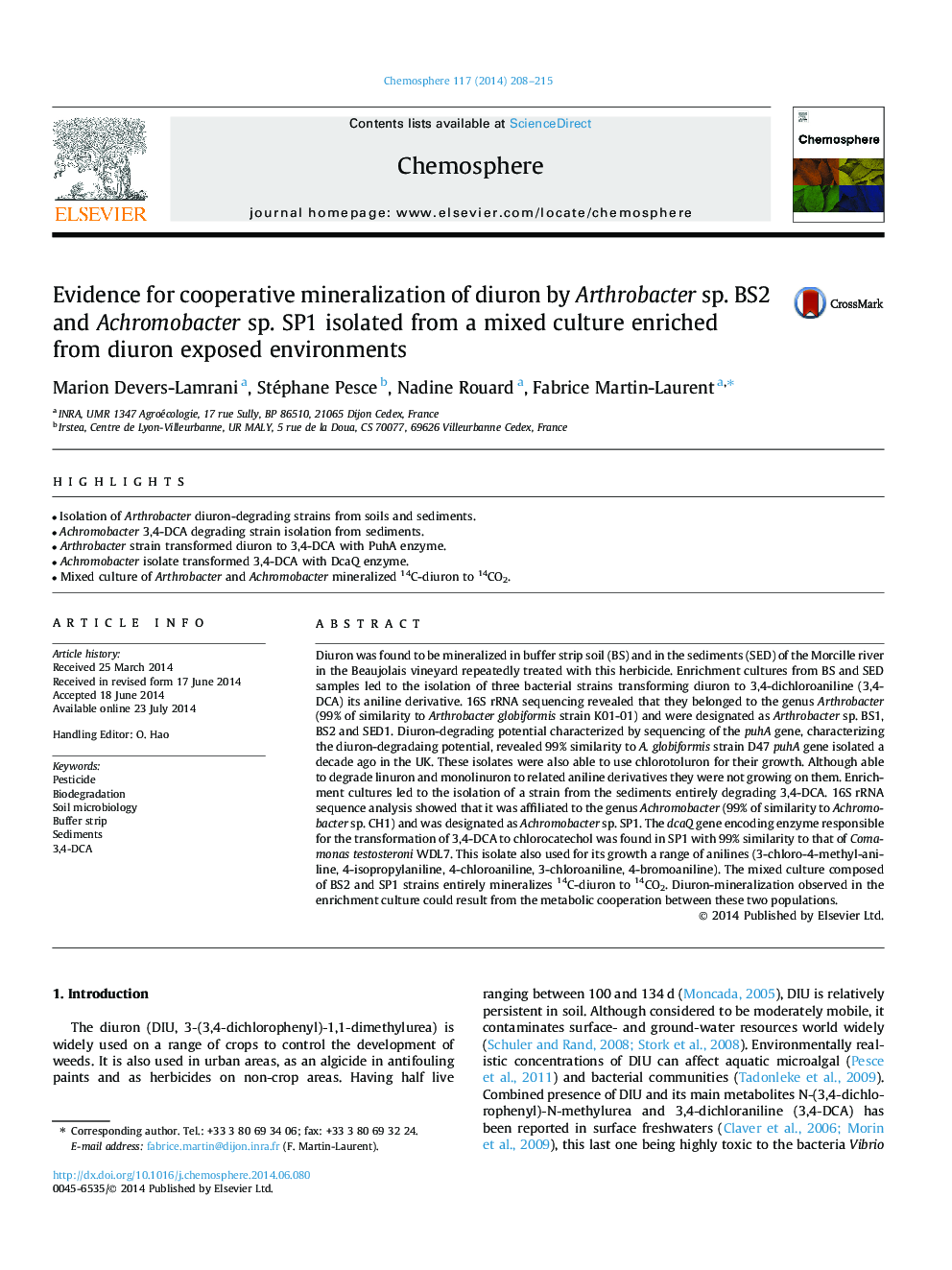| کد مقاله | کد نشریه | سال انتشار | مقاله انگلیسی | نسخه تمام متن |
|---|---|---|---|---|
| 6308426 | 1618854 | 2014 | 8 صفحه PDF | دانلود رایگان |

- Isolation of Arthrobacter diuron-degrading strains from soils and sediments.
- Achromobacter 3,4-DCA degrading strain isolation from sediments.
- Arthrobacter strain transformed diuron to 3,4-DCA with PuhA enzyme.
- Achromobacter isolate transformed 3,4-DCA with DcaQ enzyme.
- Mixed culture of Arthrobacter and Achromobacter mineralized 14C-diuron to 14CO2.
Diuron was found to be mineralized in buffer strip soil (BS) and in the sediments (SED) of the Morcille river in the Beaujolais vineyard repeatedly treated with this herbicide. Enrichment cultures from BS and SED samples led to the isolation of three bacterial strains transforming diuron to 3,4-dichloroaniline (3,4-DCA) its aniline derivative. 16S rRNA sequencing revealed that they belonged to the genus Arthrobacter (99% of similarity to Arthrobacter globiformis strain K01-01) and were designated as Arthrobacter sp. BS1, BS2 and SED1. Diuron-degrading potential characterized by sequencing of the puhA gene, characterizing the diuron-degradaing potential, revealed 99% similarity to A. globiformis strain D47 puhA gene isolated a decade ago in the UK. These isolates were also able to use chlorotoluron for their growth. Although able to degrade linuron and monolinuron to related aniline derivatives they were not growing on them. Enrichment cultures led to the isolation of a strain from the sediments entirely degrading 3,4-DCA. 16S rRNA sequence analysis showed that it was affiliated to the genus Achromobacter (99% of similarity to Achromobacter sp. CH1) and was designated as Achromobacter sp. SP1. The dcaQ gene encoding enzyme responsible for the transformation of 3,4-DCA to chlorocatechol was found in SP1 with 99% similarity to that of Comamonas testosteroni WDL7. This isolate also used for its growth a range of anilines (3-chloro-4-methyl-aniline, 4-isopropylaniline, 4-chloroaniline, 3-chloroaniline, 4-bromoaniline). The mixed culture composed of BS2 and SP1 strains entirely mineralizes 14C-diuron to 14CO2. Diuron-mineralization observed in the enrichment culture could result from the metabolic cooperation between these two populations.
Journal: Chemosphere - Volume 117, December 2014, Pages 208-215